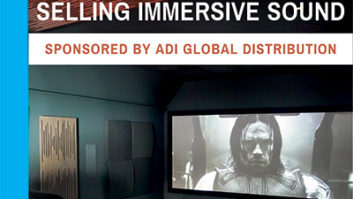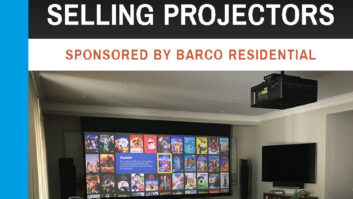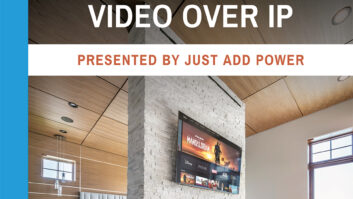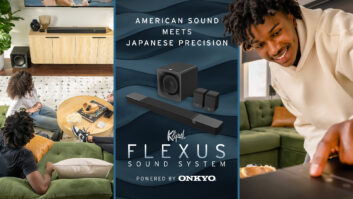At Sound United, there’s a reason why they call it “immersive surround,” says Phillip Jones, global director of brand activation. “The customer doesn’t care about the format; they care about the experience. So we talk about the sensation of being enveloped in the sound.”
That sensation, in the latest immersive sound formats such as Dolby Atmos, IMAX Enhanced, and DTS:X, is already very popular with homeowners.
“We do not get into the different formats, and only discuss Dolby Atmos,” says Leon Shaw, founder, Audio Advice. “We will recommend different configurations of Dolby Atmos based on how much a specific room needs or can handle, and what the customer’s budget is.
“The main thing we try to get across to our customers is the fact that there is now a new level of immersive audio that takes you to an entirely different place,” he adds. “We explain everything they need, and then use a special Kaleidescape playlist we made to demonstrate. And like all good demos, you tell the potential client what they will hear, then confirm that they did hear it. What they care about is an amazing experience; getting into the various formats just adds potential confusion.”
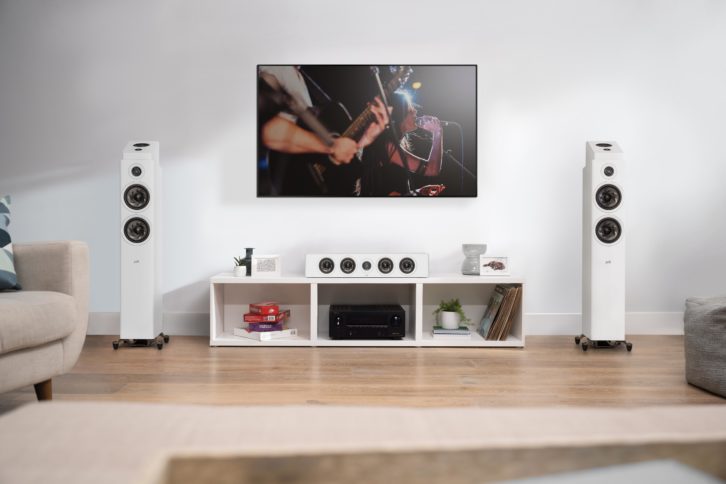
“Regardless of the format you choose, we are ‘surround sound agnostic,’” Jones notes. “At Sound United, we like to say when you access your streaming service of choice, you’ll get the most immersive experience possible. We love that we can always answer ‘yes’ to questions about compatibility. Think of the various formats like Coke and Pepsi, as an analogy. We have both on the shelf and they are both sweet and delicious, so just pick the soda you like!”
Tech Showcase: The Latest AV Receivers 2021
Shoutout to Demos
“One of the biggest challenges in our industry is demonstration because there aren’t many retailers who can do those demos,” Jones says. “Whenever we have an opportunity at a tradeshow or retailer, we encourage those valuable in-person demos, but now, with fewer places at our disposal, it is all about relaying the benefits of the technology and explaining that these formats will be close to what you would get in a movie theater.”
Of course, this is tricky to achieve without the space to do it, he adds. “Other avenues we promote instead include online demos and directing customers to reviews and testimonials,” Jones continues. “Overall, this is why we encourage every dealer to have at least one multichannel demo system that they can utilize. Dealers can use demo systems to show alternatives — to sell up to something even better, or something less if the budget requires that. For most customers, whatever they hear and feel during the demo will be better than what they’ve heard before or have at home. At a minimum, dealers should keep a high-quality soundbar such as a Definitive Studio 3d Mini on their trucks so they can do quick, virtual surround demos during in-house consultations.”
Speaker of the House
Speaker placements are pretty unified, which is nice, Jones says. “If I set up five speakers, with four in the ceiling, that arrangement will work for most surround sound systems. We try to encourage a 5.1.4 as a minimum solution, preferably with two subwoofers. Two subs will give you even bass regardless of where you’re sitting in the room. Combining five surround speakers with four height speakers, which can be mounted in the ceiling, mounted high, or height-enabled speakers to ricochet sound off the ceiling, will give you great enveloping surround sound for 4K or Apple TV or the Super Bowl.”
Budget will change the quality of speakers, he notes. “For instance, budget will determine if you get the Bowers & Wilkins 700 versus 800 series, or Polk Reserve versus Polk Legend. And the type of room will dictate the type of height and type of rears. The room does dictate, but an important rule-of-thumb is: Do not remove. Reduce. If you can put speakers in the ceiling, great, or sometimes it’s bookshelf speakers in the front and the back. As the room gets bigger or smaller, or budget gets bigger or smaller, 5.1.4 will still be the sweet spot; just scale everything up or down as the room requires.”
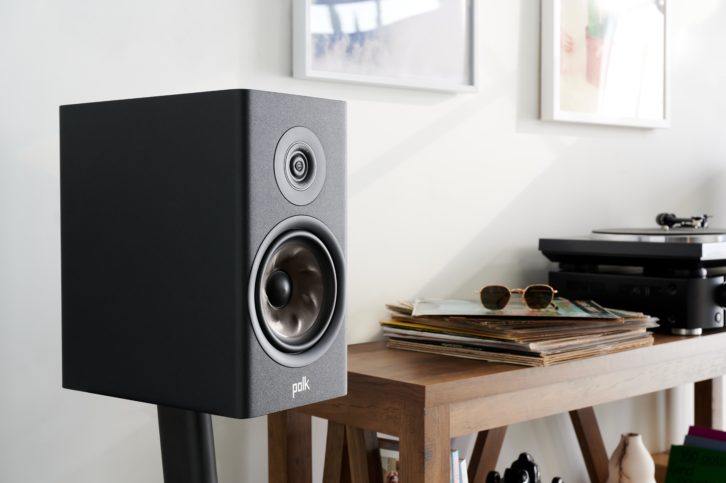
Jones explains the desire for immersive formats has increased for three reasons: work from home, the inability to go to a movie theater, and simply being stuck at home in general.
“Less time commuting means more time to enjoy entertainment,” he says. “Not being able to go to a movie theater is huge. Consider the price of movie tickets for a family of four, twice a month, plus the cost of snacks, et cetera. For that cost, families are seeing that they can afford a home theater setup. Direct release movies are also major, and they will continue to be an option because people are getting used to it. They say it takes one month to form a habit, and it has been 18 months now of everyone waiting for movies to show up at home on streaming services. People are craving a more immersive experience, and that is what we can provide. And while components will give you the best solution, it still goes back to ‘don’t remove, but reduce.’ Components are ideal first because of their expandability and performance, but, if needed, there are also multichannel soundbars that provide excellent immersive sound.”
